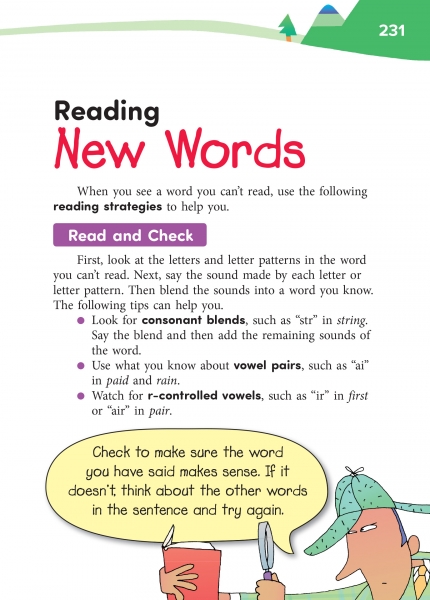Page 231 from

Start-Up Activity
Display the following sentences for your students and ask a different volunteer to read each sentence out loud.
- I like to eat stromboli.
- Italian food is appealing.
- It uses lots of oregano.
If any of them had trouble pronouncing the underlined words, tell them they are about to learn some strategies to help. Then read the material under "Read and Check." Afterward, return to the sentences and ask which strategy can help them pronounce the underline words in the . . .
- first sentence (consonant blends)? Have students pronounce it.
- the second sentence (vowel pairs)? Have students pronounce it.
- last sentence (r-controlled vowels)? Have students pronounce it.
Tell them they will learn other strategies to help them read new words.
Think About It
“At acting school people didn't speak like me. It was all received pronunciation - ‘ow now brown cow.’”
—Ray Winstone

Start-Up Activity
Display the following sentences for your students and ask a different volunteer to read each sentence out loud.
- I like to eat stromboli.
- Italian food is appealing.
- It uses lots of oregano.
If any of them had trouble pronouncing the underlined words, tell them they are about to learn some strategies to help. Then read the material under "Read and Check." Afterward, return to the sentences and ask which strategy can help them pronounce the underline words in the . . .
- first sentence (consonant blends)? Have students pronounce it.
- the second sentence (vowel pairs)? Have students pronounce it.
- last sentence (r-controlled vowels)? Have students pronounce it.
Tell them they will learn other strategies to help them read new words.
Think About It
“At acting school people didn't speak like me. It was all received pronunciation - ‘ow now brown cow.’”
—Ray Winstone